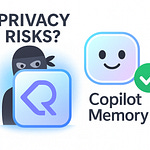Everyone thinks AI compliance is Microsoft’s problem. Wrong. The EU AI Act doesn’t stop at developers of tools like Copilot or ChatGPT—the Act allocates obligations across the AI supply chain. That means deployers like you share responsibility, whether you asked for it or not. Picture this: roll out ChatGPT in HR and suddenly you’re on the hook for bias monitoring, explainability, and documentation. The fine print? Obligations phase in over time, but enforcement starts immediately—up to 7% of revenue is on the line. Tracking updates through the Microsoft Trust Center isn’t optional; it’s survival.
Outsource the remembering to the button. Subscribe, toggle alerts, and get these compliance briefings on a schedule as orderly as audit logs. No missed updates, no excuses.
And since you now understand it’s not just theory, let’s talk about how the EU neatly organized every AI system into a four-step risk ladder.
The AI Act’s Risk Ladder Isn’t Decorative
The risk ladder isn’t a side graphic you skim past—it’s the core operating principle of the EU AI Act. Every AI system gets ranked into one of four categories: unacceptable, high, limited, or minimal. That box isn’t cosmetic. It dictates the exact compliance weight strapped to you: the level of documentation, human oversight, reporting, and transparency you must carry.
Here’s the first surprise. Most people glance at their shiny productivity tool and assume it slots safely into “minimal.” But classification isn’t about what the system looks like—it’s about what it does, and in what context you use it. Minimal doesn’t mean “permanent free pass.” A chatbot writing social posts may be low-risk, but the second you wire that same engine into hiring, compliance reports, or credit scoring, regulators yank it up the ladder to high-risk. No gradual climb. Instant escalation.
And the EU didn’t leave this entirely up to your discretion. Certain uses are already stamped “high risk” before you even get to justify them. Automated CV screening, recruitment scoring, biometric identification, and AI used in law enforcement or border control—these are on the high-risk ledger by design. You don’t argue, you comply. Meanwhile, general-purpose or generative models like ChatGPT and Copilot carry their own special transparency requirements. These aren’t automatically “high risk,” but deployers must disclose their AI nature clearly and, in some cases, meet additional responsibilities when the model influences sensitive decisions.
This phased structure matters. The Act isn’t flipping every switch overnight. Prohibited practices—like manipulative behavioral AI or social scoring—are banned fast. Transparency duties and labeling obligations arrive soon after. Heavyweight obligations for high-risk systems don’t fully apply until years down the timeline. But don’t misinterpret that spacing as leniency: deployers need to map their use cases now, because those timelines converge quickly, and ignorance will not serve as a legal defense when auditors show up.
To put it plainly: the higher your project sits on that ladder, the more burdensome the checklist becomes. At the low end, you might jot down a transparency note. At the high end, you’re producing risk management files, audit-ready logs, oversight mechanisms, and documented staff training. And yes, the penalties for missing those obligations will not read like soft reminders; they’ll read like fines designed to make C‑suites nervous.
This isn’t theoretical. Deploying Copilot to summarize meeting notes? That’s a limited or minimal classification. Feed Copilot directly into governance filings and compliance reporting? Now you’re sitting on the high rungs with full obligations attached. Generative AI tools double down on this because the same system can straddle multiple classifications depending on deployment context. Regulators don’t care whether you “feel” it’s harmless—they care about demonstrable risk to safety and fundamental rights.
And that leads to the uncomfortable realization: the risk ladder isn’t asking your opinion. It’s imposing structure, and you either prepare for its weight or risk being crushed under it. Pretending your tool is “just for fun” doesn’t reduce its classification. The system is judged by use and impact, not your marketing language or internal slide deck.
Which means the smart move isn’t waiting to be told—it’s choosing tools that don’t fight the ladder, but integrate with it. Some AI arrives in your environment already designed with guardrails that match the Act’s categories. Others land in your lap like raw, unsupervised engines and ask you to build your own compliance scaffolding from scratch.
And that difference is where the story gets much more practical. Because while every tool faces the same ladder, not every tool shows up equally prepared for the climb.
Copilot’s Head Start: Compliance Built Into the Furniture
What if your AI tool arrived already dressed for inspection—no scrambling to patch holes before regulators walk in? That’s the image Microsoft wants planted in your mind when you think of Copilot. It isn’t marketed as a novelty chatbot. The pitch is enterprise‑ready, engineered for governance, and built to sit inside regulated spaces without instantly drawing penalty flags. In the EU AI Act era, that isn’t decorative language—it’s a calculated compliance strategy.
Normally, “enterprise‑ready” sounds like shampoo advertising. A meaningless label, invented to persuade middle managers they’re buying something serious. But here, it matters. Deploy Copilot, and you’re standing on infrastructure already stitched into Microsoft 365: a regulated workspace, compliance certifications, and decades of security scaffolding. Compare that to grafting a generic model onto your workflows—a technical stunt that usually ends with frantic paperwork and very nervous lawyers.
Picture buying office desks. You can weld them out of scrap and pray the fire inspector doesn’t look too closely. Or you can buy the certified version already tested against the fire code. Microsoft wants you to know Copilot is that second option: the governance protections are embedded in the frame itself. You aren’t bolting on compliance at the last minute; the guardrails snap into place before the invoice even clears.
The specifics are where this gets interesting. Microsoft is explicit that Copilot’s prompts, responses, and data accessed via Microsoft Graph are not fed back into train its foundation LLMs. And Copilot runs on Azure OpenAI, hosted within the Microsoft 365 service boundary. Translation: what you type stays in your tenant, subject to your organization’s permissions, not siphoned off to some random training loop. That separation matters under both GDPR and the Act.
Of course, it’s not absolute. Microsoft enforces an EU Data Boundary to keep data in-region, but documents on the Trust Center note that during periods of high demand, requests can flex into other regions for capacity. That nuance matters. Regulators notice the difference between “always EU-only” and “EU-first with spillover.”
Then there are the safety systems humming underneath. Classifiers filter harmful or biased outputs before they land in your inbox draft. Some go as far as blocking inferences of sensitive personal attributes outright. You don’t see the process while typing. But those invisible brakes are what keep one errant output from escalating into a compliance violation or lawsuit.
This approach is not just hypothetical. Microsoft’s own legal leadership highlighted it publicly, showcasing how they built a Copilot agent to help teams interpret the AI Act itself. That demonstration wasn’t marketing fluff; it showed Copilot serving as a governed enterprise assistant operating inside the compliance envelope it claims to reinforce.
And if you’re deploying, you’re not left directionless. Microsoft Purview enforces data discovery, classification, and retention controls directly across your Copilot environment, ensuring personal data is safeguarded with policy rather than wishful thinking. Transparency Notes and the Responsible AI Dashboard explain model limitations and give deployers metrics to monitor risk. The Microsoft Trust Center hosts the documentation, impact assessments, and templates you’ll need if an auditor pays a visit. These aren’t optional extras; they’re the baseline toolkit you’re supposed to actually use.
But here’s where precision matters: Copilot doesn’t erase your duties. The Act enforces a shared‑responsibility model. Microsoft delivers the scaffolding; you still must configure, log, and operate within it. Auditors will ask for your records, not just Microsoft’s. Buying Copilot means you’re halfway up the hill, yes. But the climb remains yours.
The value is efficiency. With Copilot, most of the concrete is poured. IT doesn’t have to draft emergency security controls overnight, and compliance officers aren’t stapling policies together at the eleventh hour. You start from a higher baseline and avoid reinventing the wheel. That difference—having guardrails installed from day one—determines whether your audit feels like a staircase or a cliff face.
Of course, Copilot is not the only generative AI on the block. The contrast sharpens when you place it next to a tool that strides in without governance, without residency assurances, and without the inheritance of enterprise compliance frameworks. That tool looks dazzling in a personal app and chaotic in an HR workflow. And that is where the headaches begin.
ChatGPT: Flexibility Meets Bureaucratic Headache
Enter ChatGPT: the model everyone admires for creativity until the paperwork shows up. Its strength is flexibility—you can point it at almost anything and it produces fluent text on command. But under the EU AI Act, that same flexibility quickly transforms into your compliance problem. By default, in its consumer app form, ChatGPT is classified as “limited risk.” That covers casual use cases: brainstorming copy, summarizing notes, or generating harmless weekend recipes. The moment you expand its role into decision-making involving people—hiring, credit approvals, health contexts—it edges upward into higher‑risk territory with heavier obligations attached. The variable is not the tool’s code but the context of use.
This is where the difference from Copilot becomes painfully visible. Copilot inherits Microsoft’s governance stack because it lives inside Microsoft 365 with Azure OpenAI controls. Prompts and responses are processed within Microsoft’s service boundary, and documentation explicitly states they are not used for foundation model training. ChatGPT by itself, the public version, doesn’t come furnished with those assurances out of the box. You as the deployer must check OpenAI’s documentation, terms, and contracts to understand what data is stored, how it is used, and whether additional guardrails exist. The Act will not accept “we assumed it was safe” as a defense.
Using ChatGPT in corporate workflows feels less like plugging in a power strip and more like assembling the entire grid from scratch. You need to build your own scaffolding: policies to govern prompts, audit logs to record usage, boundaries on personal data, and reporting processes for errors or incidents. With Copilot, much of this structure arrives already bolted on. With ChatGPT, you’re architect, contractor, and compliance officer rolled into one.
If you need a metaphor, think of ChatGPT like a high‑performance engine without a chassis. It’s powerful, elegant in its design, and capable of extraordinary output. But on its own, it doesn’t offer the seatbelts, airbags, or regulatory stickers you’d expect in a roadworthy vehicle. And when the EU regulator is effectively the driving inspector, turning up in the workplace with that raw engine leaves you with the task of constructing the body, the dashboard, and the crash tests. Impressive horsepower, yes. Street‑legal? Not until you do the rest of the work.
The compliance friction intensifies with the Act’s transparency requirements. Generative AI outputs—including text, images, and audio—must be clearly identified as AI‑generated. Tracing prompts and explaining system behavior are required too. That is simple on paper, less so in practice. Telling a regulator that ChatGPT “predicts token likelihoods” isn’t the same as providing a legally sufficient explanation of why it influenced a hiring recommendation. And disclosure duties extend to synthetic media as well. If ChatGPT generates voice or video content resembling a real person, it risks classification as a deepfake, which pulls in even stricter oversight.
Personal data makes the compliance burden heavier still. The GDPR overlay is unavoidable: as soon as prompts include identifiers, you are responsible for ensuring lawful, fair, and transparent processing. That means consent where required, minimization of stored data, and honoring subject rights. OpenAI’s public service doesn’t automatically configure those protections for you. The responsibility to implement them sits entirely with the deployer. At minimum, you must verify—via binding contracts and documented practices—what happens to the data once you hand it over.
There is, however, a middle path. If ChatGPT’s capabilities are accessed through managed platforms like Azure OpenAI or connectors integrated into enterprise environments, the compliance landscape improves. You gain audit logs, residency guarantees, and monitoring under your tenant boundary. That does not eliminate your responsibilities—it simply makes them addressable with tools instead of spreadsheets. It shifts the conversation from “we have no oversight” to “we must validate whether the oversight promised in contracts is functioning as advertised.”
The irony is that many organizations still treat ChatGPT as an informal assistant. Drafting copy without a disclosure label, feeding it résumés without bias checks, or handling sensitive notes without data boundaries. All of these casual uses can transform a “limited risk” classification into high‑risk deployment overnight. And the Act measures by impact, not intent. What looks like a harmless test can be reclassified as a regulated system the instant it affects a person’s livelihood.
So yes, ChatGPT is versatile. It is adaptable. It can generate content faster than most employees write email subject lines. But deployed without its own compliance environment, it hands you nearly the entire EU AI Act burden to shoulder alone. Documentation, risk assessments, transparency controls, human oversight—you’re installing each brick yourself while regulators pace outside with the checklist.
Which brings us to the unavoidable conclusion: whether you choose Copilot or ChatGPT, the Act has deputized you. The frameworks and guardrails differ, but the regulator will look at your deployment, not just the vendor’s promises. You may admire the technology, but under the law, you are the one operating it. And that is where the real work begins.
Practical Survival Guide for Deployers
Now comes the part that determines whether you survive an audit or become a cautionary tale—the survival guide for deployers. Forget the drama about regulators breathing down your neck. Here’s what matters: the Act expects you to have operational checklists, not vague reassurances. And since you apparently need everything laid out, let’s make it painfully clear. Three essentials. Miss them, and you’re gambling with fines.
First item: conduct a Data Protection Impact Assessment (DPIA) and maintain a Record of Processing Activities (ROPA). No, this is not optional paperwork. Under GDPR and now reinforced by the AI Act, when you use AI in areas touching individuals—hiring, health, financial scoring—you’re expected to demonstrate that you thought through risks and documented processing flows. DPIA uncovers the risk, ROPA proves you track the processing. They are the skeleton of governance. When auditors ask “show us your risk analysis,” these are the documents they expect to land on their desks.
Second item: classify and control the data itself. Enter Microsoft Purview. This isn’t a shiny dashboard for executives to admire. It’s the system that lets you automatically label sensitive material, impose retention policies, and enforce data loss prevention (DLP). Purview ties classification rules directly to your documents, emails, and storage. Pair that with least‑privilege access models—restrict Copilot queries with semantic index and permission models so it only draws from data users are entitled to see. Think of this as setting the moat around the castle: without boundaries, any employee can accidentally feed restricted data to an AI model and force you into GDPR violation speed‑run mode.
Third item: log, retain, and manage every interaction. Copilot has activity history; configure it. Azure and Microsoft 365 give you audit logs; enable and retain them. Purview helps enforce retention policies so records don’t vanish when auditors knock. Traceability is a mandatory feature of compliance—if you can’t show “who used what AI, for which purpose, on which day,” your oversight collapses in court. And don’t forget: retention isn’t eternal. Configure policies so logs live long enough to be useful, but not so long you drown in irrelevant digital clutter. Regulators favor precision, not hoarding.
Fine, that’s the checklist. Three items. But do not interpret this as the end. Add staff training into the equation—Article 4‑style obligations exist to ensure employees aren’t wandering clueless through AI environments. Role‑based AI literacy matters. Technical staff need to grasp risk models and logging mechanics; HR staff need to understand bias, documentation, and disclosure. Pretending everyone “just knows” is fantasy. Training is compliance artifact number four: show you didn’t let employees improvise with systems tied directly to employment or privacy rights.
Now, let’s strip away illusions. Vendors do provide scaffolding. Microsoft is generous with toolkits, transparency notes, dashboards, and compliance templates. OpenAI provides documentation about usage, risks, and transparency commitments. But scaffolding is not the building. You are responsible for erecting the actual governance structure. When regulators arrive, “Microsoft had a dashboard” is irrelevant if your house is still a pile of scaffolding poles sitting on the ground.
Think about the logic of enforcement. Regulators don’t question whether Microsoft Purview exists; they ask if you implemented the controls. They won’t accept “Copilot has logging options.” They’ll demand your logs. If your team can’t produce them, the fines and headlines will write themselves. This is the part leaders underestimate—compliance is not about owning tools. It’s about proof that those tools ran in your environment, configured correctly, with traceable output.
The consequences aren’t abstract. Fail and you risk tens of millions in penalties, public embarrassment in international headlines, and erosion of trust with customers who suddenly wonder why your HR department runs like a hacker forum. That isn’t melodrama—that is the environment you now inhabit. Compliance is survival, not garnish.
And here’s the comparative sting: Copilot buyers inherit scaffolding already bolted into Microsoft 365. Deployment frameworks, policies, activity history, regional boundaries—they exist and you configure them. ChatGPT in standalone form? You start from an engine without a frame. You must assemble every safety measure manually: DLP, audit logs, policies, oversight, disclosures. Scaffolding versus new construction. One begins halfway; the other starts with raw ground and an inconvenient pile of parts.
But don’t misread compliance as a brake pedal. Rules do not ban adoption—they determine how adoption is structured. And that structural clarity alters the playing field. The question now isn’t whether you risk using AI, but how well you can harden it so regulators see a stable system instead of a liability.
Because what most miss is that governance and innovation are not opposites here. They form the conditions that determine whether AI can actually scale inside enterprises. And that resets the real debate—not whether AI survives regulation, but how regulation clears away shortcuts so AI can mature without constant disasters slowing it down.
The Act Isn’t an Innovation Killer
Think the EU AI Act smothers innovation? Incorrect. Its purpose is not to handcuff developers or bury enterprises in paperwork—it’s to replace uncertainty with a stable framework. Rules don’t kill technology. They make it usable at scale. The assumption that regulation equals stagnation is as flawed as thinking speed limits killed the automobile.
By forcing safety, transparency, and accountability, the Act does something enterprises actually like: it lowers the background anxiety that stops projects from scaling. When leaders know exactly what is required, they stop running silent experiments in the corner and start deploying system-wide. Microsoft publicly leans into this point—it positions the Act as a driver for trustworthy adoption. That’s why the Trust Center, the Responsible AI Standard, and a long trail of documentation exist. These aren’t goodwill gestures; they’re tools designed to shift AI from novelty to infrastructure.
Of course, most organizations picture only the stick: fines, inspector visits, and paperwork nightmares. And yes, that side is written clearly into the regulation. But ignoring the flip side misses the point. Clear obligations don’t create hesitation—they remove it. Contrast pre‑Act chaos, where projects drifted in limbo because nobody knew whether a résumé scanner was legal, with today’s defined checklists. Rules give you reference points. They let you move forward without gambling on being declared non‑compliant six months after rollout.
Think traffic again. Nobody cries that traffic laws ended transport. They made driving through dense cities survivable. AI follows the same logic: without structure, adoption collapses under mistrust; with guardrails, adoption accelerates when users and regulators both know the boundaries. The Act isn’t mysterious—it’s a seatbelt. Enterprise doesn’t abandon the car because seatbelts exist; it accelerates because passengers finally feel safe to get inside.
If you want proof that regulated conditions still allow new use cases, look no further than Microsoft’s lawyers themselves. Internally, they’ve used Copilot to help staff interpret AI Act provisions in day‑to‑day tasks. That’s not marketing, that’s a legal department quietly using generative AI for compliance questions—a use case they wouldn’t touch in the regulatory uncertainty of the past. Innovation did not vanish; it shifted into projects that thrive specifically because the guardrails exist.
That said, let’s not romanticize regulation. There are gaps. Certain advanced models arrive slower in Europe due to compliance costs and legal uncertainty. Vendors sometimes hesitate to launch services here because auditing, documentation, and liability provisions add overhead. The result is uneven access: some regions get shiny tools first, while European customers wait for compliant versions. That is the cost of the framework. It’s not nothing, but it’s the trade-off for long‑term stability and public trust.
Now compare Copilot and ChatGPT through this lens. Copilot operates within Microsoft 365, under enterprise‑grade compliance and data boundaries. Rules are mapped into the tool. ChatGPT, in its standalone public form, is a raw model. Use it for publishing a blog post, and it sits safely in “limited risk.” Use it for hiring, and the burdens stack onto your desk immediately. Neither system is “killed” by regulation—the difference is whether the guardrails are handed to you at installation or whether you must weld them together yourself.
The payoff is structural. The Act raises the bottom line for adoption. Enterprises don’t tinker in shadows; they scale with confidence because they can point to codified obligations. Vendors like Microsoft build governance into Purview, layering classification, lineage, and audit trails where the regulation demands traceability. OpenAI, when accessed through managed platforms like Azure OpenAI, piggybacks into the same structures. Adoption follows when traceability and oversight are not marketing slogans but enforceable features.
Seen clearly, the Act isn’t a cage. It’s a scaffold. Scaffolds don’t restrict construction—they’re the equipment that prevents workers from falling while the building climbs higher. That’s the real secret here: under the EU AI Act, innovation and regulation aren’t pulling against each other. They’re moving in tandem. The only decision is whether your organization chooses to climb with the support in place, or whether it insists on improvising at ground level.
And that choice matters, because not all tools meet the scaffold in the same way. Some, like Copilot, arrive aligned with it by design. Others, like ChatGPT, demand you build your own frame before you even start climbing. That practical difference—inherited guardrails versus self‑assembled protection—is what separates smooth adoption from reckless exposure.
Conclusion
Here’s the part you’re waiting for: the conclusion. Copilot stands closer to “compliant by design,” integrated into Microsoft 365 with governance and audit scaffolding already present. But do not confuse that with a silver bullet. You still have to configure, document, and monitor. It lowers your legal exposure, yes—but it does not eliminate it.
So what next? Three steps. One: classify your AI use case against the EU AI Act risk ladder. Two: enforce tooling with Microsoft Purview, Copilot activity history, and the Responsible AI Dashboard for documentation and control. Three: run DPIAs, keep a RoPA, and train staff as Article 4 demands.
If you want to remember those without rewatching this entire lecture, subscribe now. Regular compliance briefings, platform‑specific, delivered here—no excuses.










